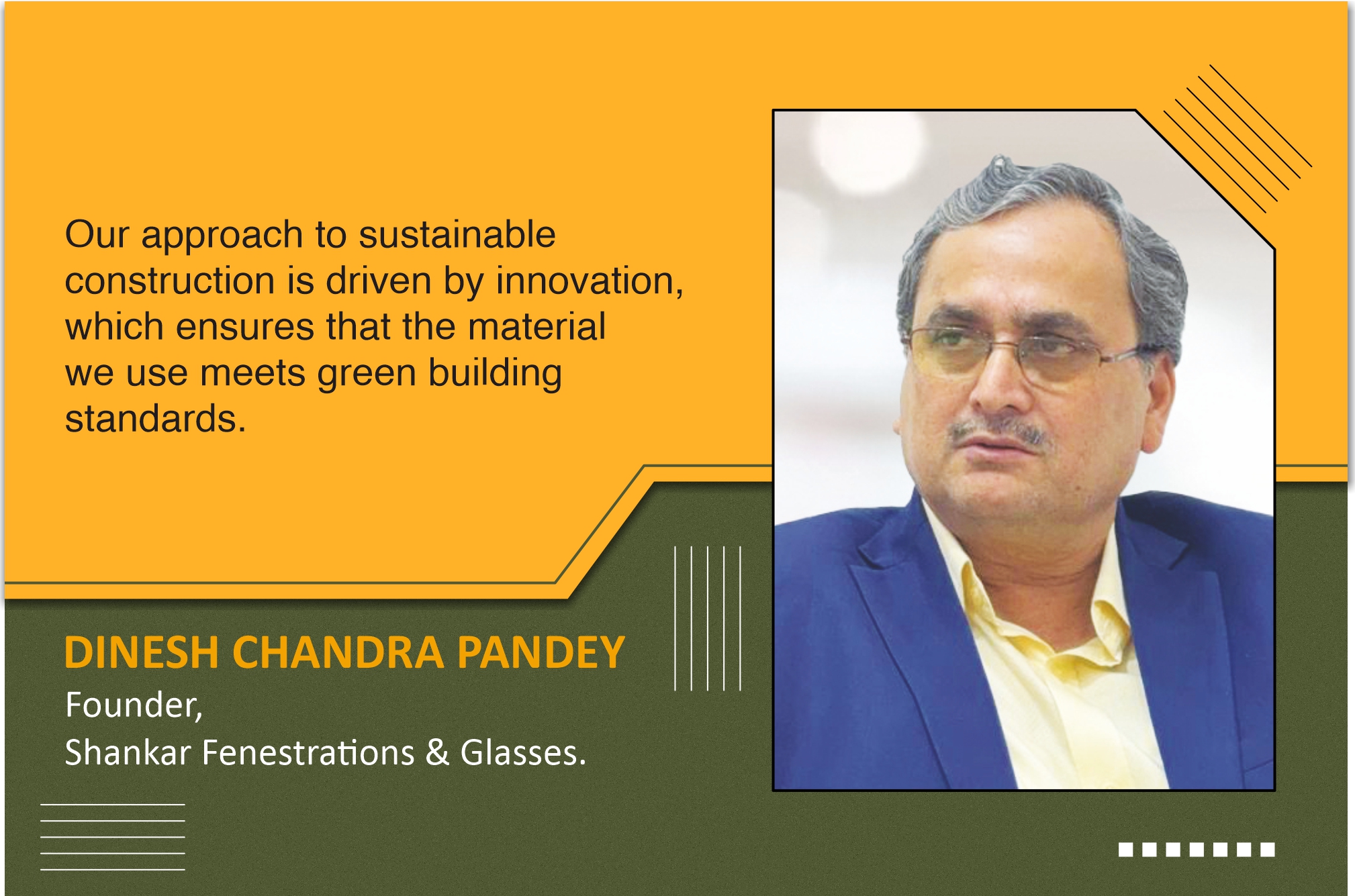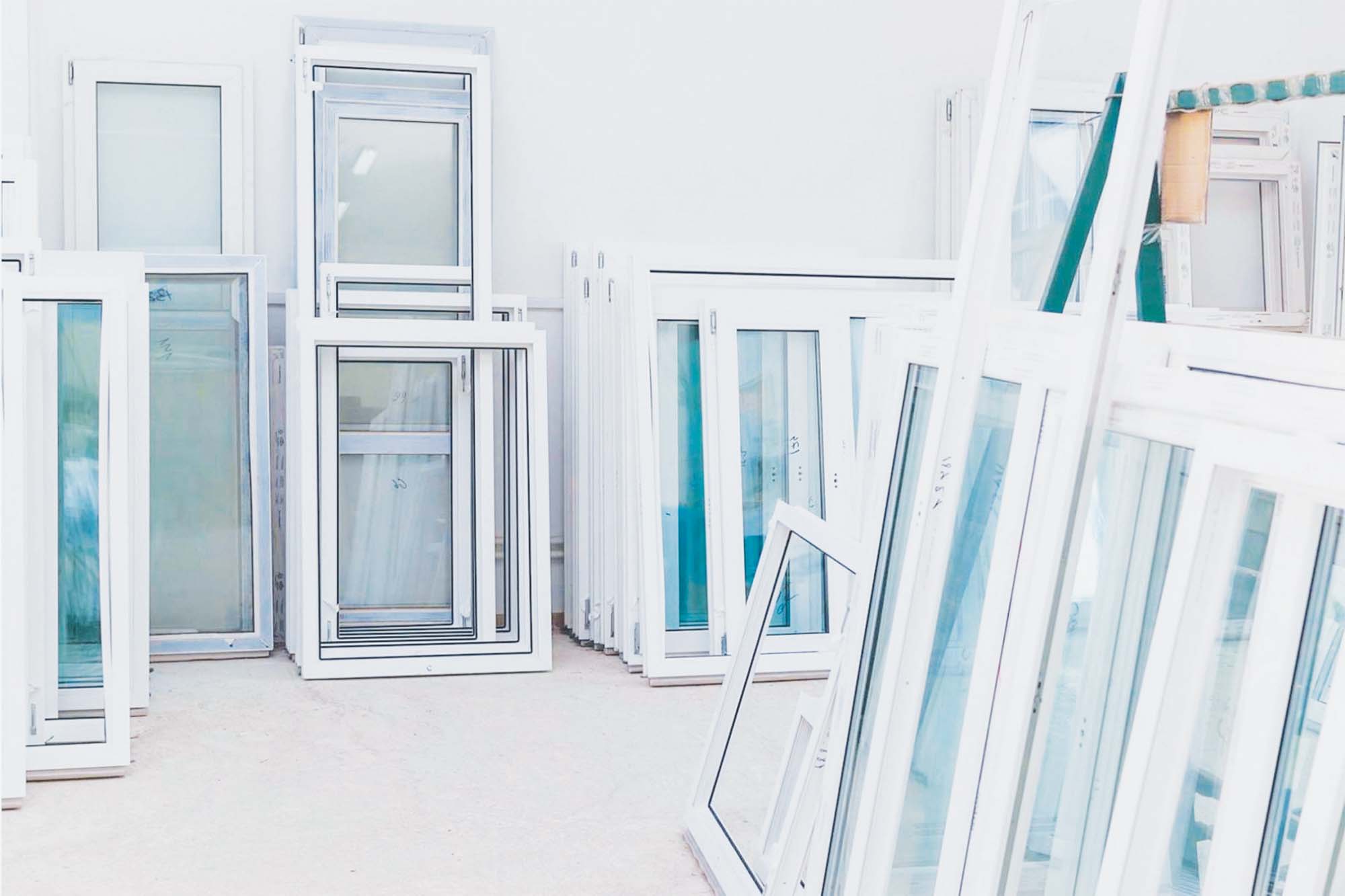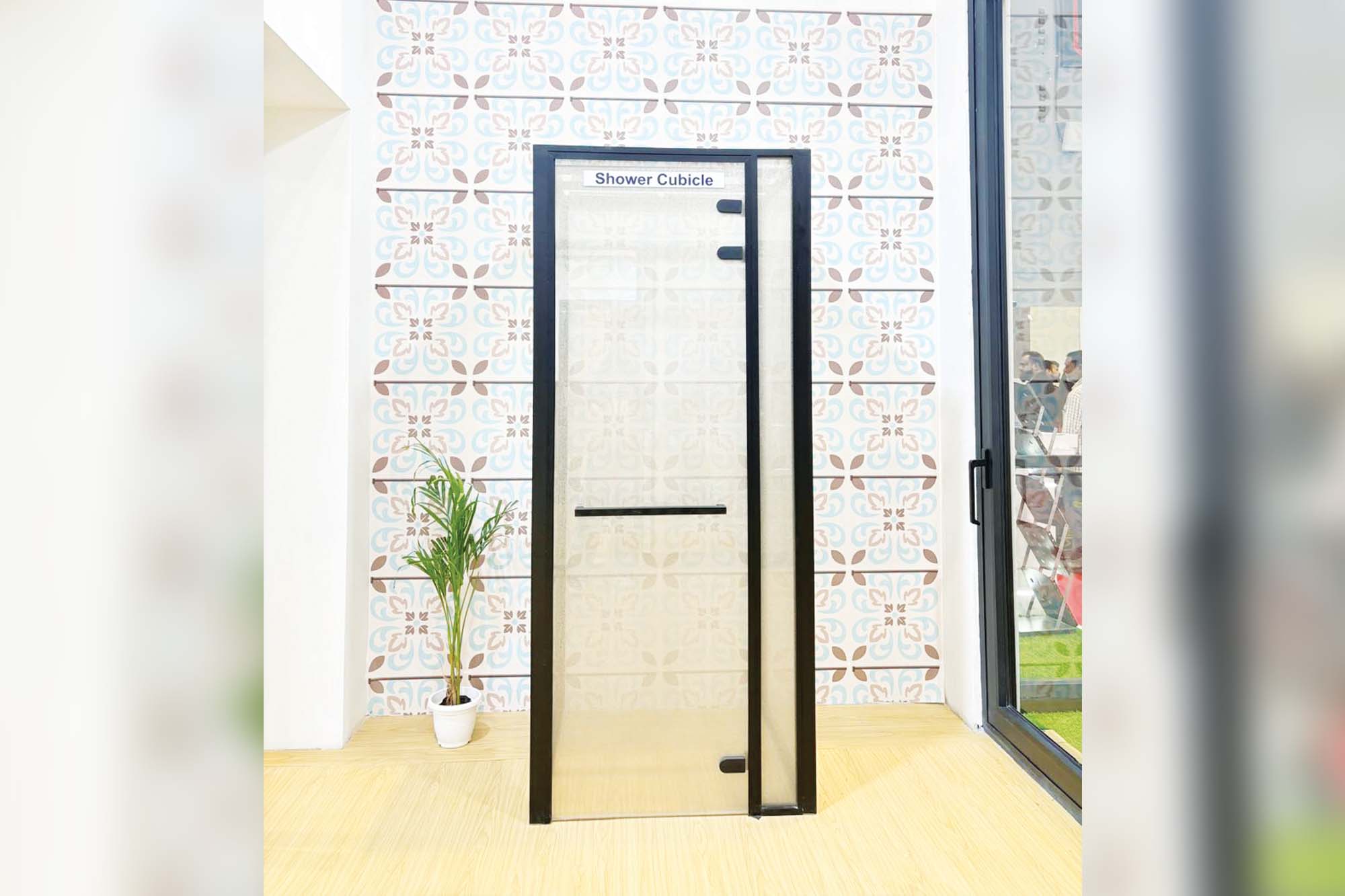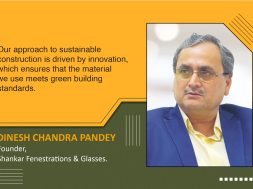We use low-carbon frames, recyclable components, and glass to reduce environmental impact

The discussion delves into sustainable building materials, ways to integrate them into construction, and the challenges associated with their availability and adoption.
Can you walk us through the sustainable building materials available today in India and globally?
Sustainable building materials like bamboo, recycled steel, glass, and concrete are widely available globally and locally, providing environmentally friendly building solutions. Low-E glass, rammed earth materials, hempcrete, and biodegradable insulation such as cork and cellulose increase energy efficiency and sustainability. Green roofs, living walls, and natural materials like stone and clay facilitate eco-friendly architecture aided by technological improvements.
How do you approach integrating sustainable building materials into your projects? What are the best practices?
We prioritise sustainability by employing eco-friendly building materials in all of our projects. We use low-carbon aluminium frames, recyclable components, and energy-efficient glass to minimise environmental impact. Our best practices include using cutting-edge technologies such as double-glazed and solar-controlled glass for energy efficiency, sourcing materials locally to reduce transportation costs and emissions, and adhering to green construction standards. In addition, we ensure that the materials are recyclable and long-lasting, promoting long-term sustainability. We aspire to deliver solutions that meet functional and aesthetic needs and promote environmental responsibility by combining innovation and eco-friendly practices.

What factors must be considered to ensure structural integrity and longevity of buildings when using sustainable building materials?
It is important to use sustainable building materials judiciously. Apart from planning construction with materials like bamboo and rammed earth, considering environmental conditions such as humidity and UV exposure and properly treating materials prone to degradation are essential for ensuring the structural integrity of buildings. Effective design and engineering, quality control, certified sourcing of materials, and regular maintenance are also critical for increased performance and longevity.
Please share your thoughts on BIM’s work in sustainable building design and material selection.
Building Information Modelling (BIM) facilitates sustainable design by producing exact 3D models that help assess materials under a variety of conditions. For example, it aids in the optimisation of glass selection by taking into account solar heat gain, insulation, and daylighting. The information can help architects select the right type of glass, effectively reducing carbon footprints. BIM also makes it easier to choose recycled or eco-friendly materials, which promotes sustainability.

What are the potential challenges in finding and integrating sustainable building materials in construction? What are your thoughts on overcoming them?
Integrating sustainable materials presents obstacles such as restricted availability, increased costs, uneven quality, and lack of awareness. The scarcity and cost of materials such as bamboo and hempcrete hinder their adoption. Quality control and certification are critical for reliability, but traditional methods limit understanding and acceptability. To effectively promote sustainable construction practices, governments and industries must fund research, provide cost-cutting incentives, and educate architects, builders, other stakeholders, and, most importantly, the customers.
For more details, visit: https://www.shankarglass.com/
Cookie Consent
We use cookies to personalize your experience. By continuing to visit this website you agree to our Terms & Conditions, Privacy Policy and Cookie Policy.










